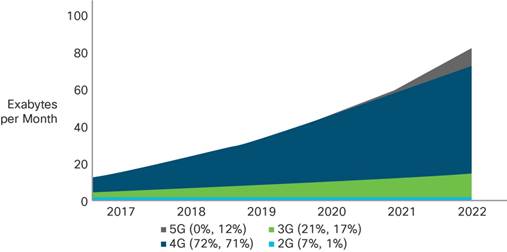It is too early to predict whether purpose-built low-power sensor networks are going to get more market share than mobile operator versions of such networks. The LPWANs already are in commercial operation, one might argue. On the other hand, new mobile standards are coming.
And mobile operators have been supporting machine-to-machine networks since 2G. So the argument might be whether the special-purpose networks can take share from the mobile operators, and if so, how much.
And mobile operators have been supporting machine-to-machine networks since 2G. So the argument might be whether the special-purpose networks can take share from the mobile operators, and if so, how much.

Narrowband internet of things (NB-IoT) and LTE-M are two approaches to creating low power sensor networks supporting sensors on a 4G mobile network, emphasizing low battery consumption and low cost connectivity. But both those networks arguably are positioned in a different part of the potential market than other purpose-built machine-to-machine networks.
Whether it is an advantage or not will vary by use case, but the mobile variants will feature bandwidth as much as an order of magnitude higher than purpose-built M2M networks. Eventually that might come to be seen as an advantage, even if initially it is seen as a bit of overkill (with cost implications to match).
Over time, and with volume, such differences might narrow. In the meantime, mobile service providers are likely to use forward pricing to bridge the gap.
Some idea of the character of machine-to-machine (sensor) applications can be seen by the typical amount of data that has to be transmitted by sensors. It may remind you of paging systems, should you recall them.
Sigfox says that sending GPS location requires about six bytes, temperature just two bytes. Object status might require only a single byte, the same amount of data consumed to report speed.
That shows just how optimized a low power wide area network is for low power consumption. Where one might think kilobytes are required to report at least some types of information, other simple status updates might take even less than that.
Such networks are optimized for uplink communications only, not duplex. So sensor transmitters can be turned off when not actively uploading data. Also, many sensor apps only require that a particular sensor be turned on for a few seconds a day, says Marc Olivier, Sigfox VP.
IoT networks optimized for mobile networks feature much-higher bandwidths. M2M networks on 4G networks tend to support a few megabits per second, while 5G variants might support 10 Mbps.
You might correctly guess that such positioning means mobile M2M sensor networks might have an advantage for higher-bandwidth apps, while purpose-built LPWAN networks might have an advantage for applications where reporting requirements are quite low.
Source: Sigfox
Source: Sigfox

No comments:
Post a Comment